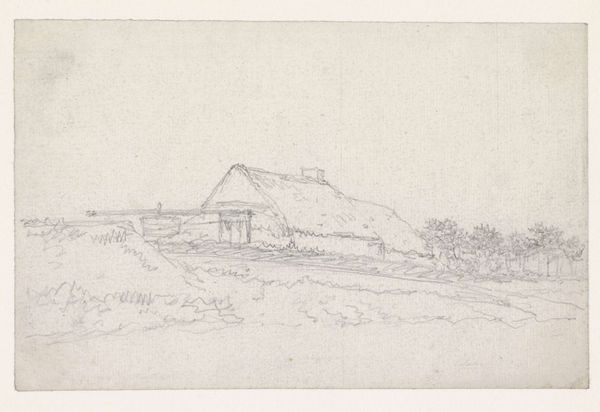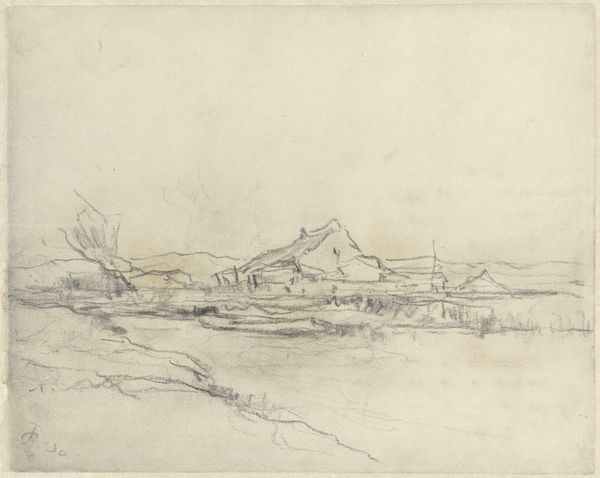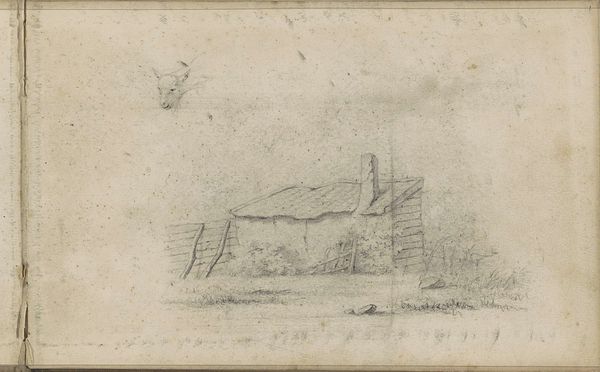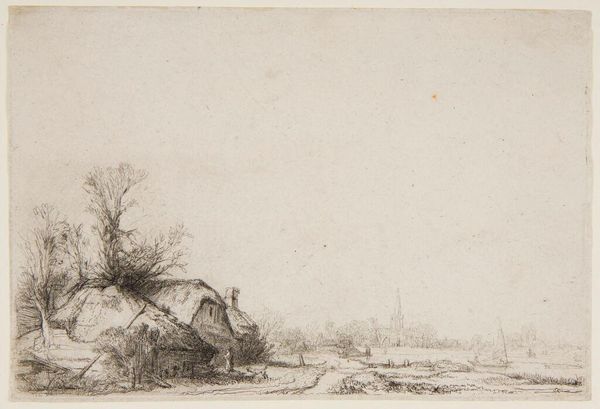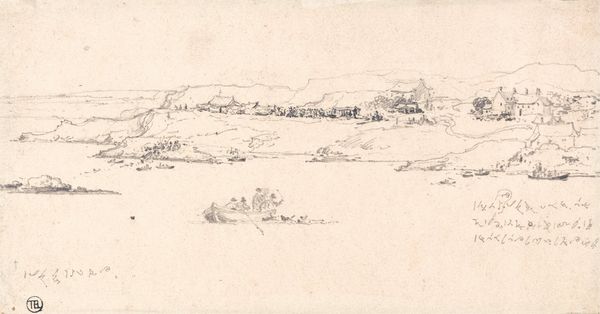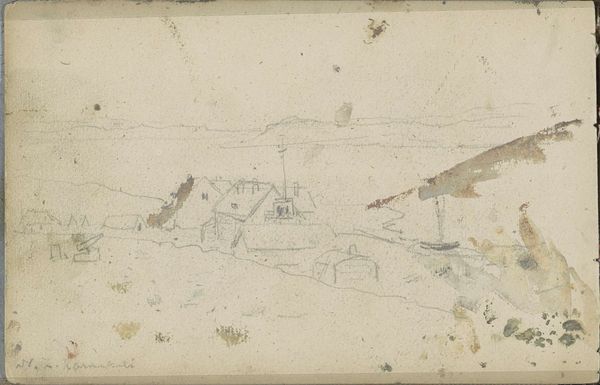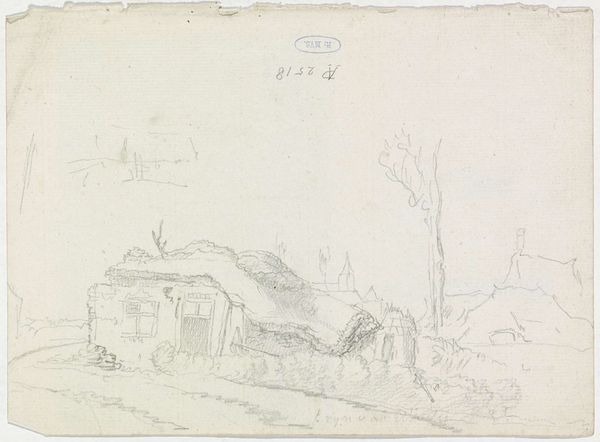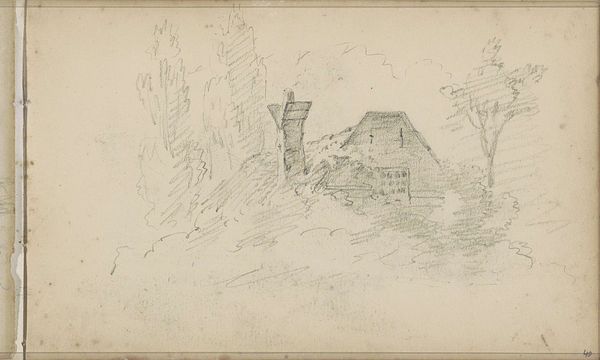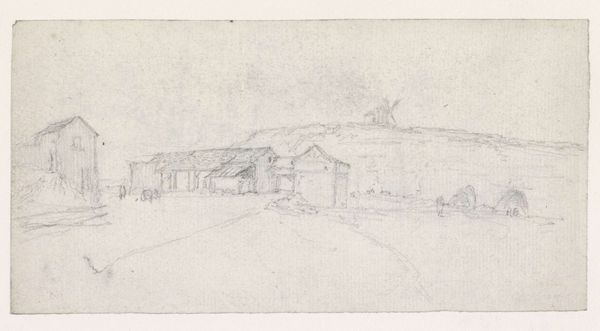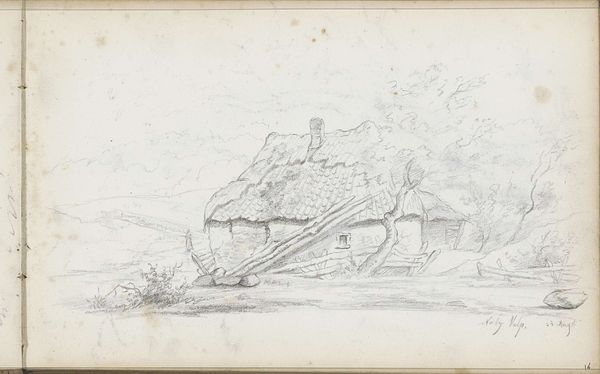
Longhouse Farmstead with a Haystack in a Polder Landscape c. 1652
0:00
0:00
rembrandtvanrijn
Rijksmuseum
drawing, paper, pencil
#
drawing
#
dutch-golden-age
#
landscape
#
paper
#
form
#
pencil
#
genre-painting
#
realism
Dimensions: height 97 mm, width 209 mm
Copyright: Rijks Museum: Open Domain
"Longhouse Farmstead with a Haystack in a Polder Landscape" was created by Rembrandt van Rijn using pen and brown ink. It is a seemingly simple landscape, yet it invites us to consider the relationship between the Dutch people and the land that defines their nation. In 17th-century Holland, the polder landscapes weren't just a backdrop; they were central to Dutch identity, a testament to human ingenuity and perseverance. Rembrandt, born in Leiden, was keenly aware of this. His sketch shows more than just a farmstead; it reflects a society shaped by its environment. Consider how the haystacks symbolize not just agricultural abundance, but also the labor and social structure of rural communities. The humble longhouse represents the daily lives, struggles, and resilience of the Dutch farmers who shaped the landscape. This work resonates because it reminds us of the universal connection between people and their environment. It subtly underscores the idea that our identities are deeply rooted in the places we inhabit and the work we do.
Comments
rijksmuseum about 2 years ago
⋮
Next to a lopsided haystack Rembrandt sketched a ‘langhuisboerderij’ (‘longhouse-farmstead’). These farms contain a dwelling with a fireplace on one side, and a cow shed on the short side. They were made of wood and had thatched roofs, with a smoke hole in the roof ridge. These farms were typical of the area north of the IJ estuary, such as the Zaan region and the small villages in Holland on the Zuiderzee.
Join the conversation
Join millions of artists and users on Artera today and experience the ultimate creative platform.

